“Seeing our magnificent ape family up close, how they care for each other, the way they call out danger to protect each other, groom, work and play together, was beautiful. They were obviously intelligent and caring, always acting with nature, not against it, aware of their place within the mountains.”
Juliet Gellatley, founder of Viva! UK & Viva! Uganda
Africa is home to the only two species of gorilla in the world: the Eastern gorilla and Western gorilla. Uganda’s majestic mountain gorilla (Gorilla beringei beringei) is a subspecies of the Eastern gorilla.
The world’s remaining mountain gorillas live in just two places: on the war-torn Virunga Mountain slopes, spanning across Uganda, Rwanda and the Democratic Republic of Congo, and in Uganda’s Bwindi Impenetrable Forest National Park. As their name suggests, mountain gorillas can be found admiring the panoramic views from cloud-cloaked mountains, at elevations between 1,400 and 3,800 metres.1https://ugandawildlife.org/animals/mountain-gorilla/
Tragically, mountain gorillas are a highly endangered species, although, thanks to the around-the-clock protection of the Park Rangers of Bwindi and HUGO volunteers, are no longer critically endangered.2https://www.worldwildlife.org/species/gorilla Still, according to the most recent gorilla survey, only 1,063 mountain gorillas remain on the planet and at least 459 of these reside in Uganda’s Bwindi Impenetrable Forest.3https://igcp.org/content/uploads/2020/09/Bwindi-Sarambwe-2018-Final-Report-2019_12_16.pdf That means nearly half of all mountain gorillas live in Bwindi and emphasises the importance of preserving the forest and supporting the gorilla protectors.
Fascinating facts
Family comes first with mountain gorillas
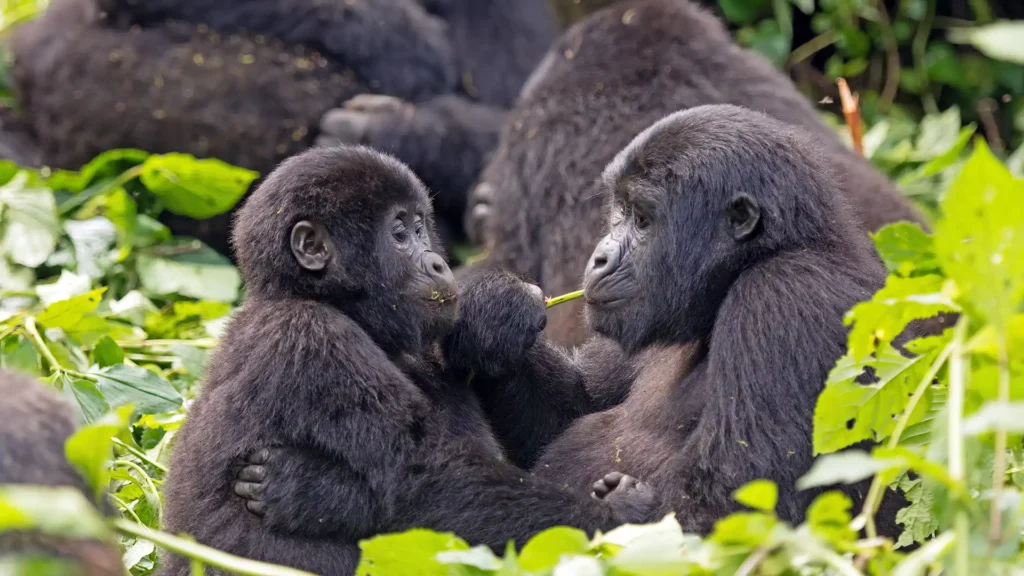
Most gorillas live in close families – or troops – of 10 to 30 members, with one dominant male and several females. Males and females both care for their infants, playing with them and protecting them from threats. When they reach adulthood, most males and around 60 per cent of the females leave home to join another troop..4https://www.wwf.org.uk/learn/fascinating-facts/gorillas
From blackbacks to silverbacks
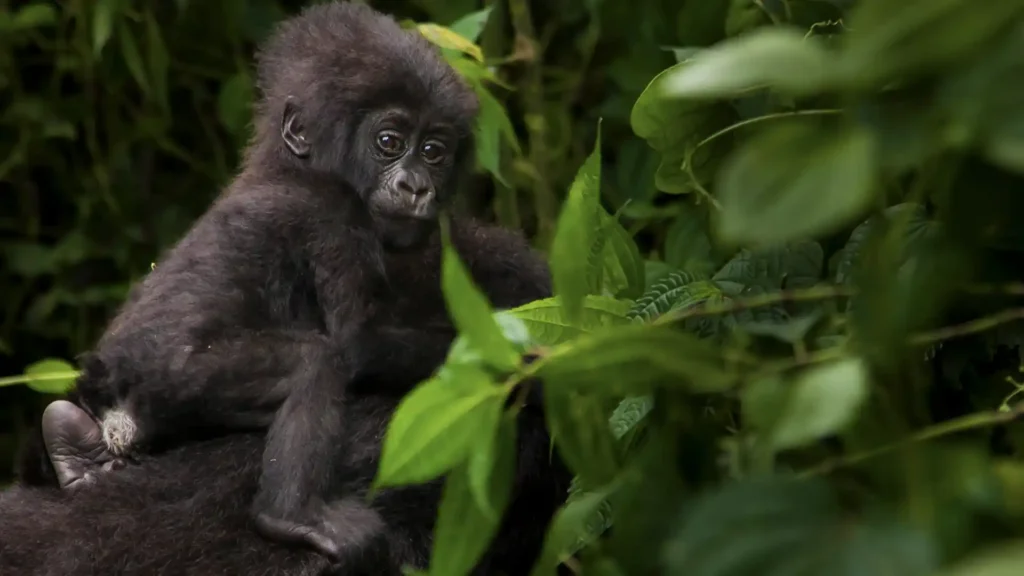
Gorillas are considered adults at just eight years old. Between eight and 12 years old, male gorillas are called ‘blackbacks’ until they become ‘silverbacks’, because of – you guessed it! – the metallic silver hair on their backs. Gorillas live up to 40 years in the wild but the oldest gorilla in the world is 66 (as of 2023).
The love of a mother is like no other
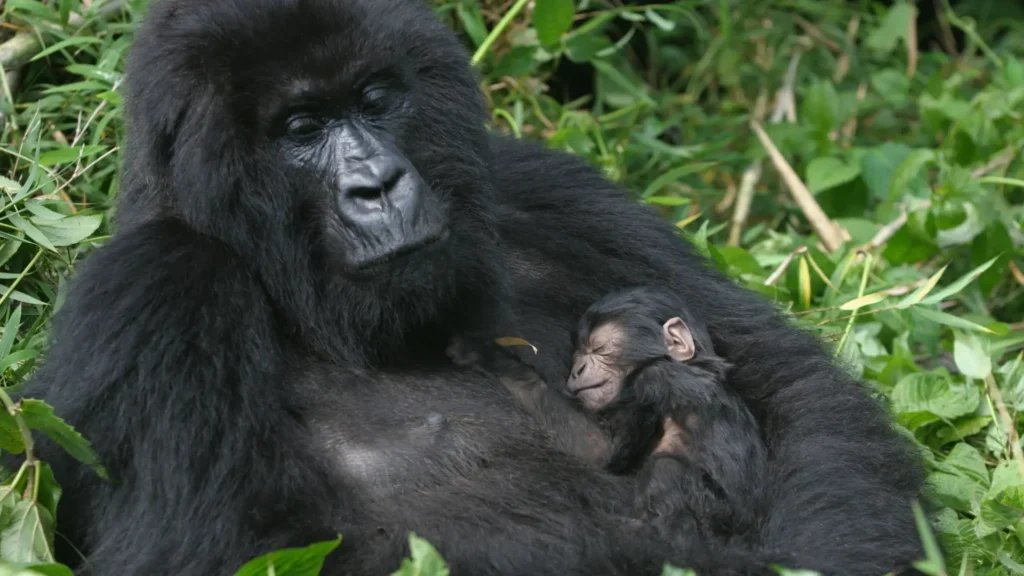
Just like humans, a mother gorilla gives birth to one infant after a nine-month pregnancy. Although gorillas grow much bigger and stronger than us, their babies are tiny. At birth they only weigh 1.8 kilograms (four pounds) but are already able to cling to their mother’s fur as she gently clutches them to her chest. Once they reach four months old, they are strong enough to ride around on their mother’s back, which they’ll do until they are weaned at around three years old.5https://www.nationalgeographic.com/animals/mammals/facts/mountain-gorilla A mother gorilla is totally devoted to her child and their bond lasts a lifetime.6https://gorillafund.org/uncategorized/gorilla-moms-and-dads-being-together/ When Juliet visited the gorillas of Bwindi, her first glimpse was of a gentle and kind mother, playing with her four-year-old son. The mother asked him for a scratch by pointing to her back and he immediately obliged.
Gorillas like a fresh bed!
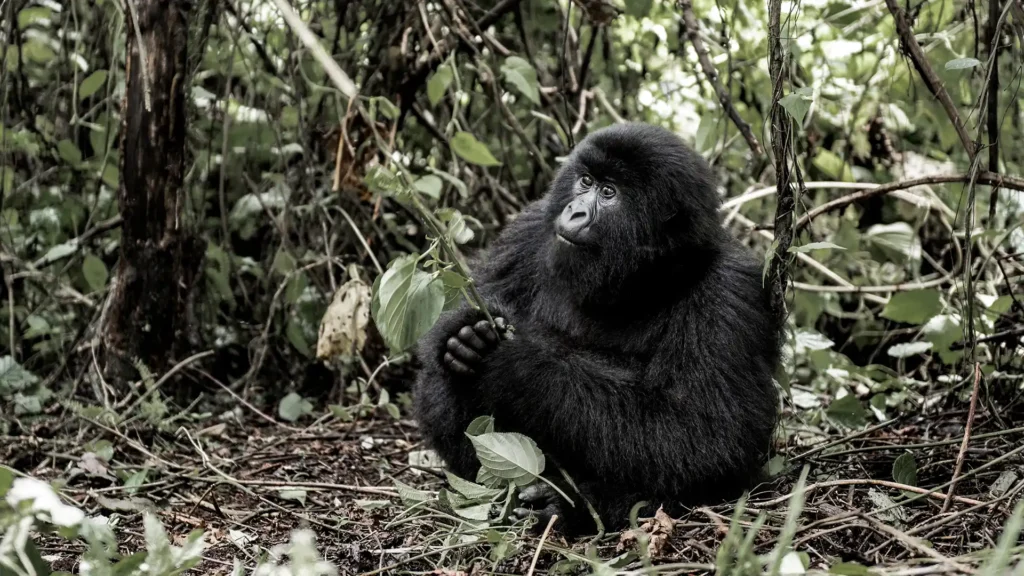
Every night gorillas make a new nest, on the ground or in the trees (if they’re light enough!), out of leaves, branches and bushes. Being a gorilla is tiring so they sleep for 12 hours a night!7https://gorillafund.org/uncategorized/gorilla-night-routines/ Mother gorillas sleep with their infant until they are three years old, and if the infant has sadly been separated from his or her mother, the silverback will take the infant into his nest to keep them warm during the cold mountain nights. One silverback called Isabukuru, looked after three infants, and another silverback, Bwenge, took care of two. When Isabukuru sadly died, Kubaha took over, continuing to be surrounded by infants day and night.6https://gorillafund.org/uncategorized/gorilla-moms-and-dads-being-together/
Infant gorillas play just like human children
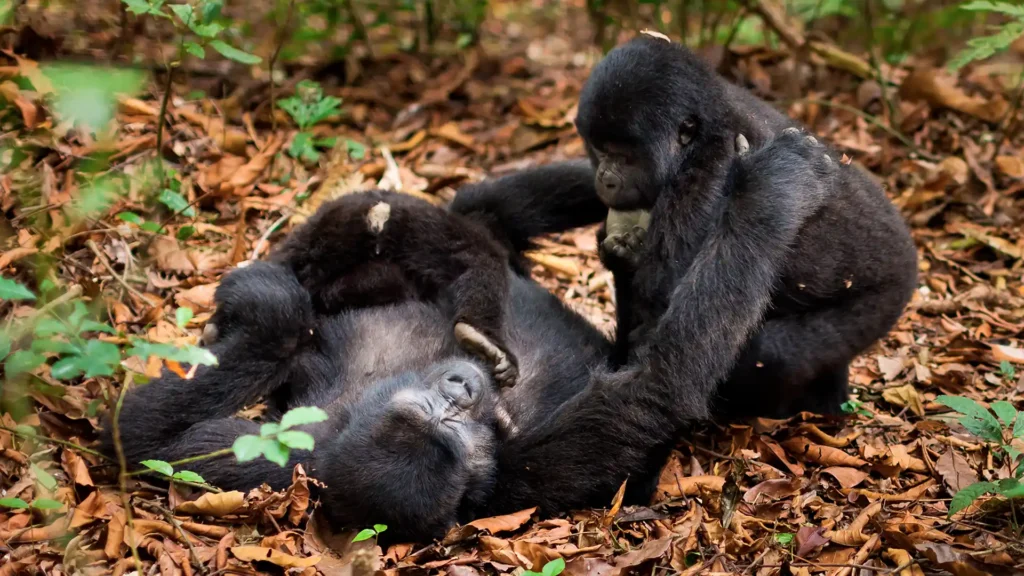
Just like young humans, young gorillas between three and six years old are very playful and mischievous. They can be seen playing with and chasing each other, climbing trees and swinging from branches. The jungle is their playground, and they love to make the most of every branch, vine and liana!
Silverbacks would be record-breaking weightlifters!
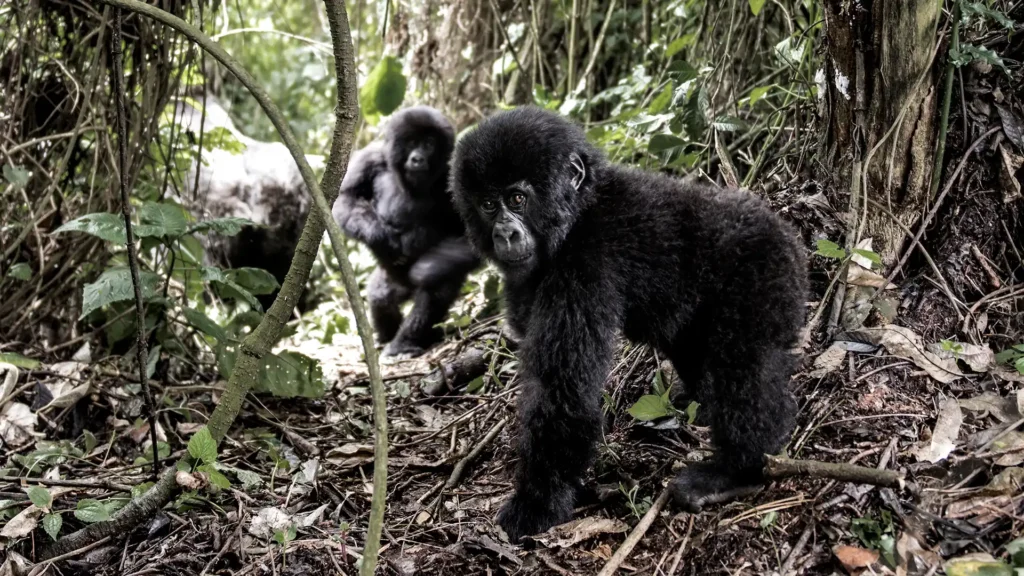
An average silverback weighs 195 kg (almost 31 stone) and is 1.5 metres (almost 5 feet) tall. Silverbacks are incredibly strong and can lift over 800 kg (126 stone) – without ever going to the gym! The human record for the deadlift is just over 500 kg (78.7 stone) but most people won’t come anywhere close.8https://virunga.org/wildlife/primates/mountain-gorillas/silverback-gorilla/ Although silverbacks are one of the strongest mammals on Earth, their real strength lies in maintaining a peaceful and prosperous troop.
Mountain gorillas love plant-based food!
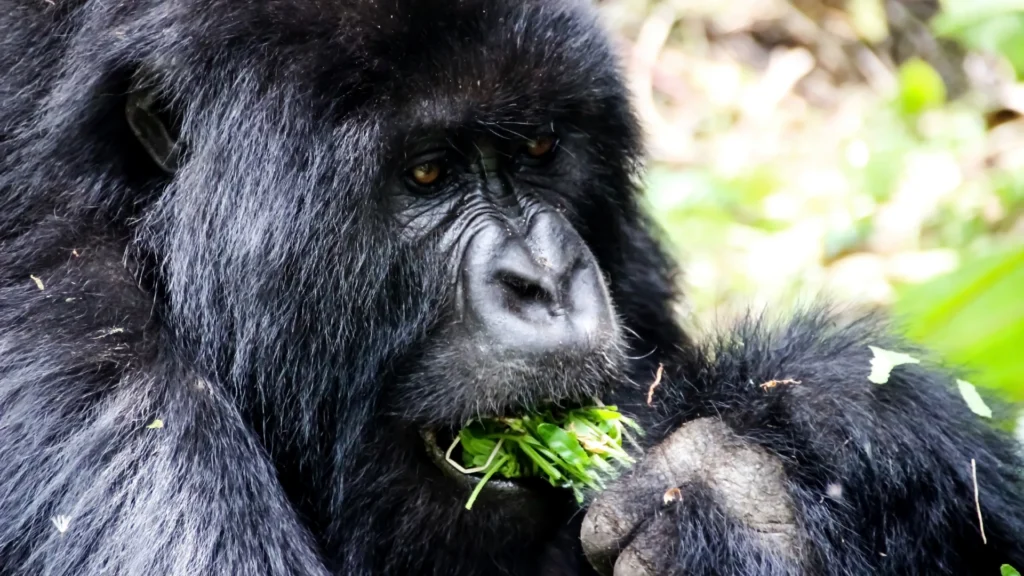
Gorillas are herbivores and spend about six hours a day eating to get all the energy they need – that’s about 30 kilograms of plants!9https://www.natgeokids.com/uk/discover/animals/general-animals/gorilla-facts/ Leaves, shoots and stems make up about 86 per cent of their diet and they are known to eat 142 different plant species. Seven per cent of their diet is made up of roots, three per cent flowers and two per cent fruits.10https://www.gorillaugandasafaris.com/blog/mountain-gorilla-diet/ The remaining two per cent includes snacking on a tiny amount of insects and even rotting wood for the minerals it contains!4https://www.wwf.org.uk/learn/fascinating-facts/gorillas
Mountain gorillas are organic farmers
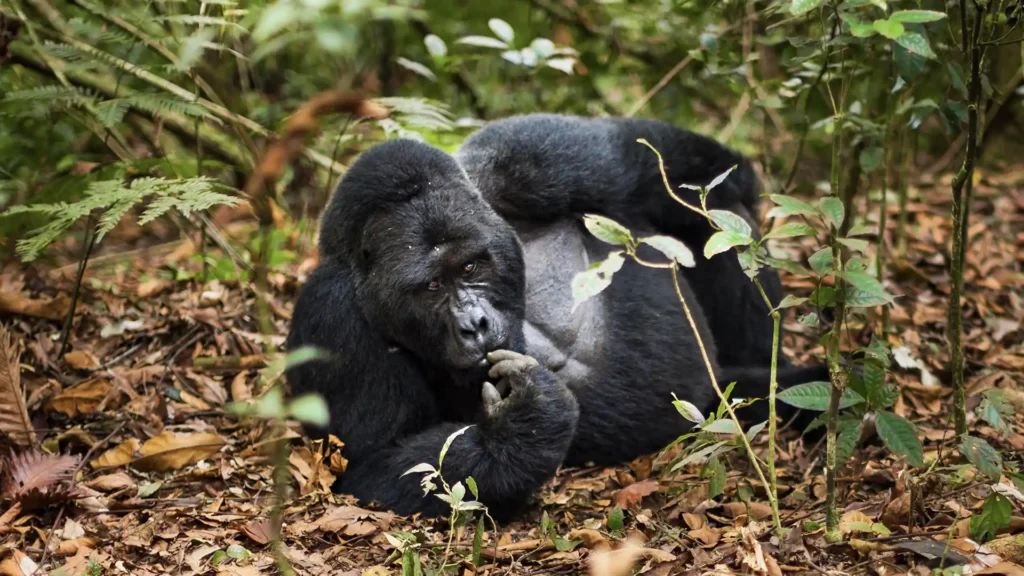
Mountain gorillas play an important part in maintaining a healthy ecosystem. Not only do they help clear the land so sunlight can penetrate the thick forest foliage and help new plants grow, but they also disperse seeds from the fruit they eat. When they go to the toilet, they are effectively planting these seeds in a big pile of organic fertiliser so that they can grow into new plants and trees.11https://www.ifaw.org/uk/animals/mountain-gorillas
Mountain gorillas have many forms of communication
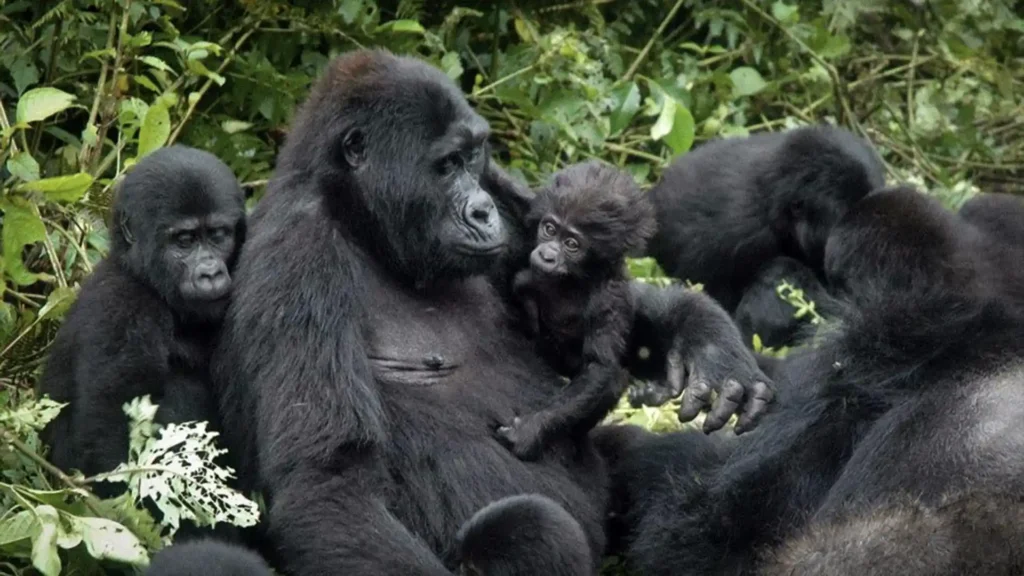
Gorillas talk to each other using sounds and actions. Some sounds are high-pitched and playful so they can express alarm or curiosity, while others are fierce and powerful to scare off threats and rivals.4https://www.wwf.org.uk/learn/fascinating-facts/gorillas Gorillas use ‘grumbles’ to share their location with others and even to comfort each other. Mountain gorillas are also intelligent enough to read very subtle expressions in their family members’ eyes and visual cues are often used in a troop.12https://www.clevelandzoosociety.org/z/2022/03/04/ask-the-expert-how-do-gorillas-communicate In captivity, gorillas have even been taught basic sign language. Koko was the most famous gorilla to learn sign language, learning about 1,000 signs and 2,000 spoken words in English.
Mischief monkeys!
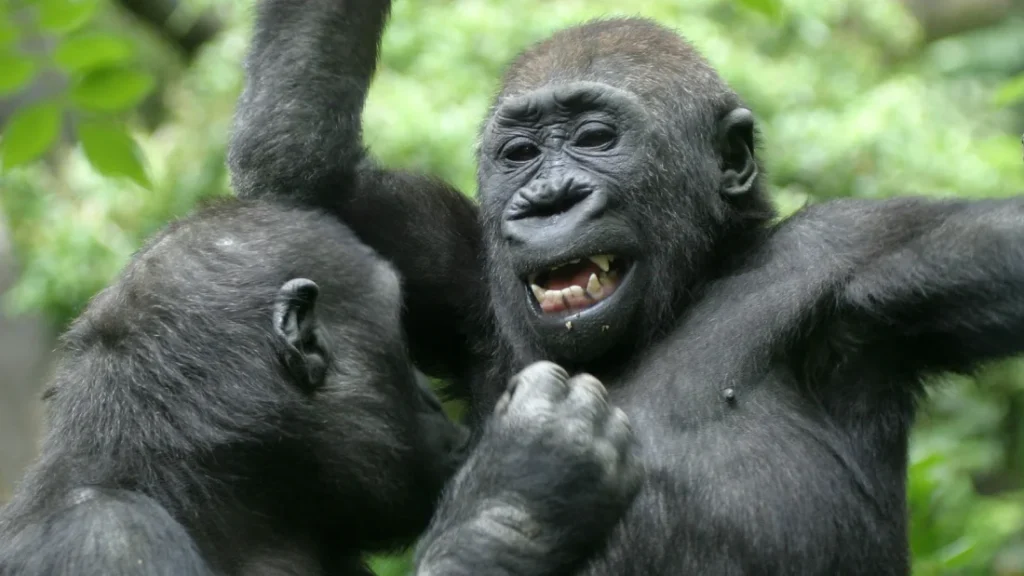
Gorillas (like bonobos, common chimpanzees and orangutans) have a sense of humour! They tickle and poke each other for fun. They also steal from each other just to playfully tease. This mischievous behaviour shows how cognitively advanced the great apes are. They also all laugh when they are tickled, or when they wrestle and play chase.13https://www.livescience.com/60864-do-animals-have-humor.html 14https://www.newscientist.com/article/2417005-great-apes-like-teasing-each-other-which-may-be-the-origin-of-humour/
Gorillas are engineers
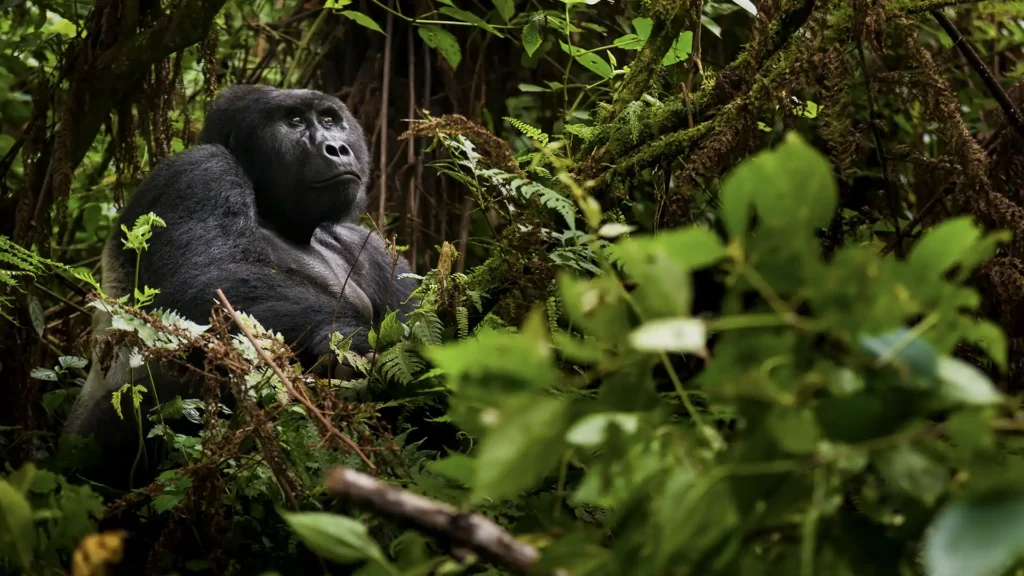
You’ve probably heard of chimpanzees and gorillas using twigs like cutlery to scoop up little insects or dig ants out of their nest, but that’s just scratching the surface of what a gorilla can do with tools. Scientists have witnessed mountain gorillas creating ladders from bamboo so their infants can reach the higher branches of trees and using sticks to calculate the depth of rivers and streams.15https://www.sciencedirect.com/science/article/abs/pii/S0376635713002052 So, gorillas have both brains and brawn!
Mountain gorillas are our second closest relative
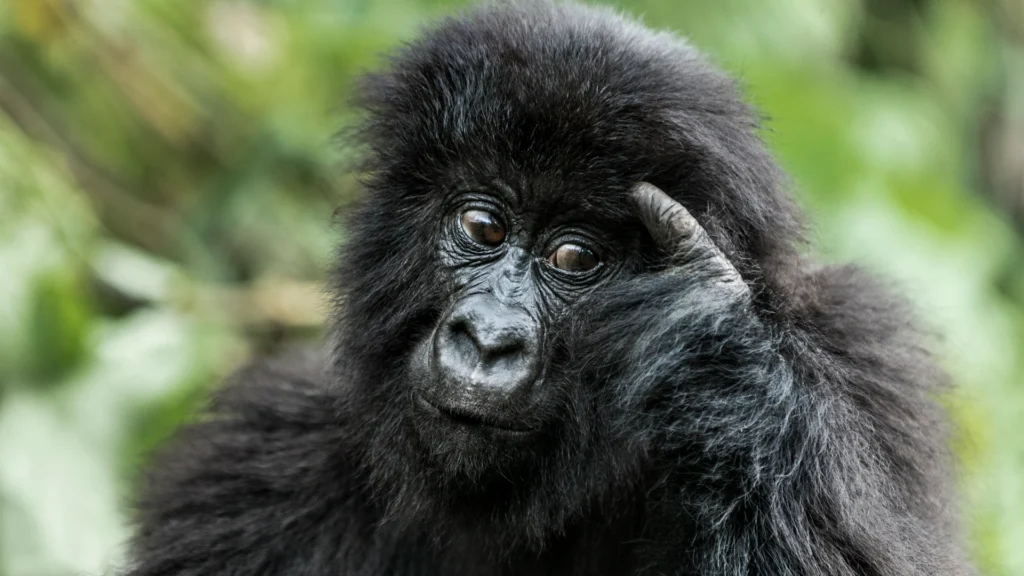
After chimpanzees, mountain gorillas are the second most-related ape to humans. Humans and gorillas share about 98 per cent of the same DNA.16https://www.scientificamerican.com/article/tiny-genetic-differences-between-humans-and-other-primates-pervade-the-genome/ and mountain gorillas may be even more closely related to humans than we think. For example, scientists recently discovered that humans and gorillas share a very similar ear shape.17https://www.nature.com/articles/nature10842
Together, Viva! UK and Viva! Uganda are doing all they can to protect these awe-inspiring apes and to support the volunteers giving their time and energy to the mountain gorillas of Bwindi Impenetrable Forest. But we can’t do it without you. Donate now and become a Gorilla Defender today!
References
- 1
- 2
- 3
- 4
- 5
- 6
- 7
- 8
- 9
- 10
- 11
- 12
- 13
- 14
- 15
- 16
- 17

